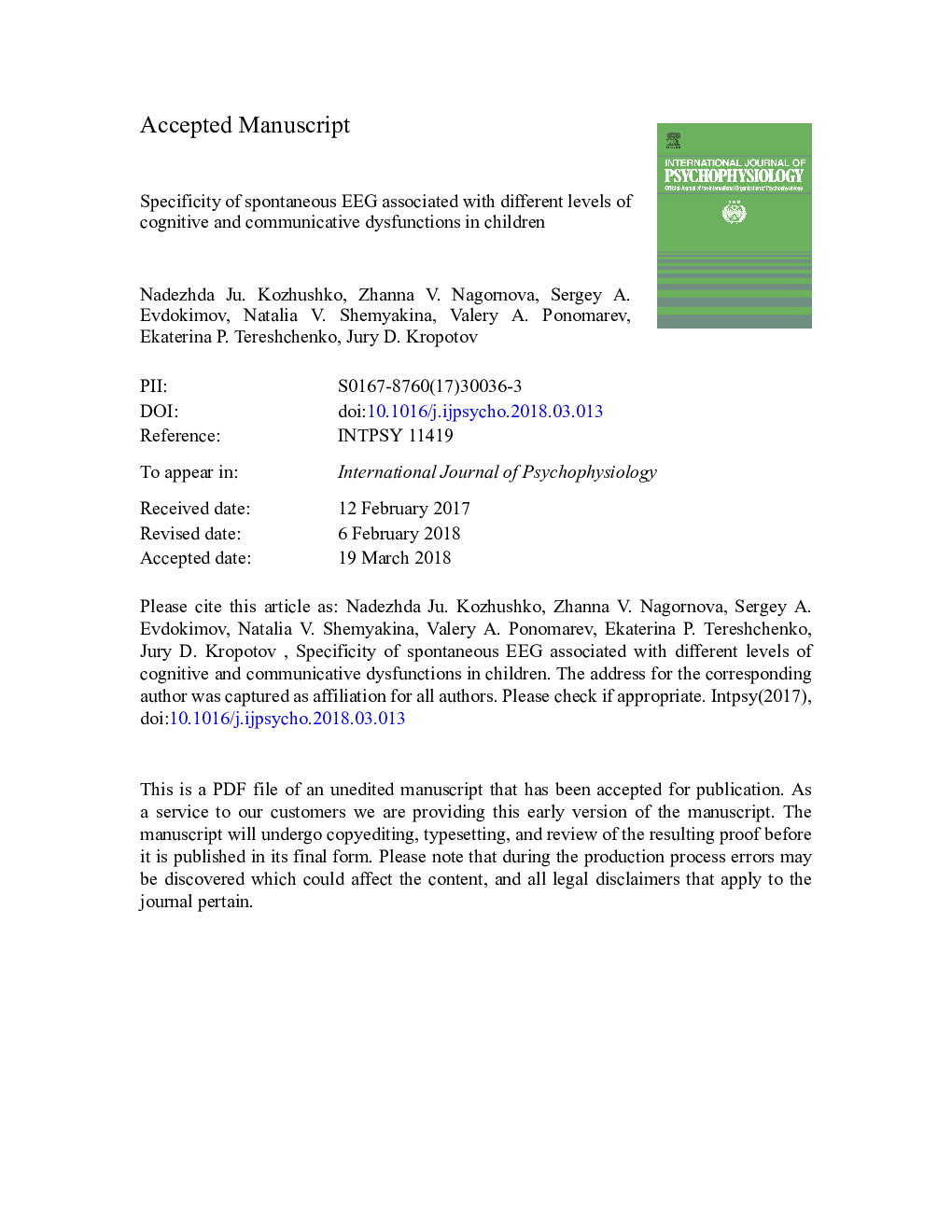| Article ID | Journal | Published Year | Pages | File Type |
|---|---|---|---|---|
| 7294806 | International Journal of Psychophysiology | 2018 | 33 Pages |
Abstract
This study aimed to reveal electrophysiological markers of communicative and cognitive dysfunctions of different severity in children with autism spectrum disorder (ASD). Eyes-opened electroencephalograms (EEGs) of 42 children with ASD, divided into two groups according to the severity of their communicative and cognitive dysfunctions (24 with severe and 18 children with less severe ASD), and 70 age-matched controls aged 4-9â¯years were examined by means of spectral and group independent component (gIC) analyses. A predominance of theta and beta EEG activity in both groups of children with ASD compared to the activity in the control group was found in the global gIC together with a predominance of beta EEG activity in the right occipital region. The quantity of local gICs with enhanced slow and high-frequency EEG activity (within the frontal, temporal, and parietal cortex areas) in children 4-9â¯years of age might be considered a marker of cognitive and communicative dysfunction severity.
Related Topics
Life Sciences
Neuroscience
Behavioral Neuroscience
Authors
Nadezhda Ju. Kozhushko, Zhanna V. Nagornova, Sergey A. Evdokimov, Natalia V. Shemyakina, Valery A. Ponomarev, Ekaterina P. Tereshchenko, Jury D. Kropotov,
